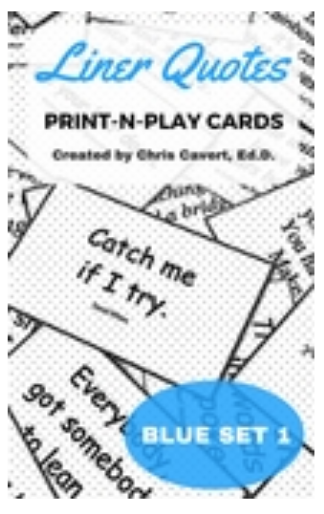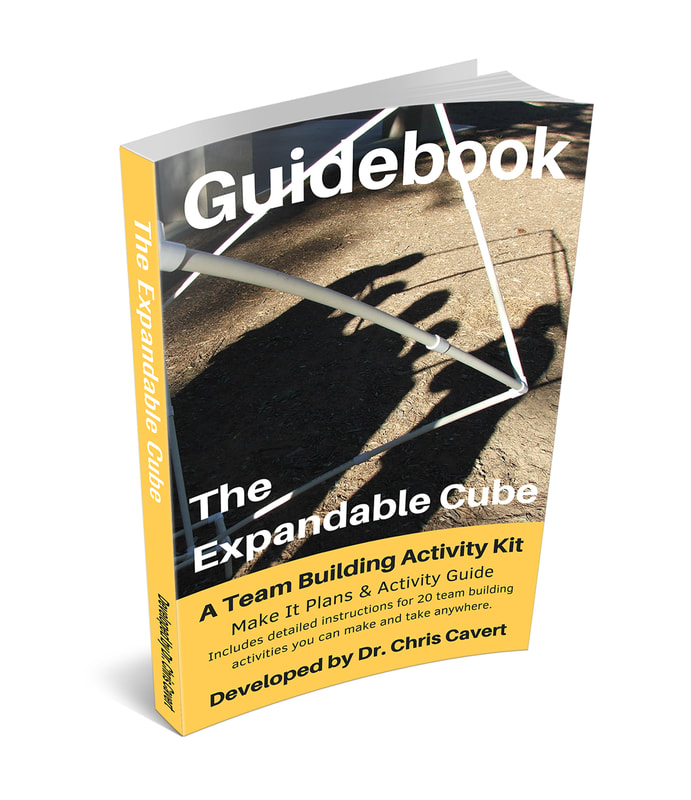|
Nate Folan! Nate is the author of, The Hundredth Monkey: Activities That Inspire Playful Learning (2012). Get your copy HERE. I posted Lotsa Blocks a while back - most of the block activities are from Nate's book. And, there's LOTS more activities to dive into. Nate has recently set off on his own after working for Project Adventure. Keep an eye on his developments and resources at NateFolan.com He's working on some great stuff - don't miss it.
|
About Nate's interview:
"Tune in for [the] conversation with Nate where [he'll] talk about how to link and layer activities, energy, and focus effectively as a facilitator, what are the essential behaviors for group facilitators to be successful, the importance of growth mindsets and much more!"
He was happy to share with us:
Here's the brief with the Starfish. Say to your group, "Okay, the idea here is to say what I say and do what I do. Got it? Great! Let's go!" Then crouch down into a squat (wait for them to squat), then jump up into the air extending your arms and legs out to the sides saying, "I'm a Starfish, I'm a Starfish, I'm a Starfish." Yes, you go back down into a squat before each, "I'm a Starfish." Then, choose another animal with a specific animal motion and pose. After four or five of these you and your group are pretty warmed up and having fun doing it! (This one is in Nate's book.)

Swat Tag - Nate likes this series of Swat Tag activities. He uses them to teach about choice, commitment, challenge and levels of risk taking.
The game "Swat" is found in the 1981 More New Games book. It was played with foam foils used for teaching fencing. I've included one of the pictures from the book (I honestly had hair like that!!).
When I offer points, I ask players to set a goal before each game. This allows me to talk about the goal setting process and outcomes.
Moonwalking involves three people. One person is the moonwalker, the other two are the "lifters". (Karl Rohnke would call this type of activity a "stunt".) The lifters take a supporting hold of the moonwalkers underarm and elbow - one lifter on each side. The moonwalker goes down a bit into a squat and then springs upward into the air. The lifters provide a slight to moderate lift (not a tossing the person in the air lift) always staying in contact with the moonwalker. The lift gives a bit more height to the jump so there can be a "weightlessness" effect. As the moonwalker heads back down to earth the lifters provide some upward support so the moonwalker does not land too abruptly - the lifters are "spotting" the downward motion of the moonwalker.
Be sure to provide the time for everyone in each group of three to practice the jumping and lifting spot.
After some stationary practicing it's time to travel. Now, the moonwalker will be jumping a bit forward as the lifters move along side, always lifting on the jump and staying in contact with the moonwalker - bring sure to support the landing. Be mindful, the moonwalker does not want to jump too far forward out jumping the lifters spots.
Be sure to provide the time for everyone in each group of three to practice traveling and the moving lifting spot.
Moonwalking KeyPunch - (Here's what I remember about this one.) Set down some numbered spots - about one spots for every two people in your group. Then you'll need a "Moon Crater" around each numbered spot - a hula-hoop, a webbing circle or you could even tape out a square around each spot.
Once you're set up, each group of three stands around a different crater. Now, let's say we have 24 people in our group. (Perfectly divisible by three! I love it when it works out.) That means there are 12 numbered spots inside craters. My group is standing around crater number 10 (the other groups are standing around another number of their choice). The objective, for each group of three, will be to touch each numbered crater in order and return to their original crater as quickly and safely as possible - you are on the moon after all. So, my group starts with crater 10, then we go to 11, then 12. After we touch 12 we find number one, then two, then, three - working our way back to the number 10 crater. When all the groups have returned to their original crater the time stops.
How do you touch the spots?, you ask. Well, since we all know how to moonwalk now, we all moonwalk through each crater. One leap and lift in, landing on the number. Then, another leap and lift out. After a successful crater connection my group looks for the next number (maybe with a little help from our companions). Once we reach our next destination another moonwalker takes this crater - so, we switch out roles at every crater. Do be careful during the lunar movement.
When everyone has returned to their original crater, log the time and see if the moonwalkers are up for another attempt. (You will find that this one does require some physical effort - so, you might want to take a little break before the next moonwalk.) (Moonwalking, I'm guessing will be in Nate's next book.)
- Sonic 1: An exciting twist to Everyone's It tag. Players try to collect as many wiffle balls [or other like materials] as they can while avoiding the tag of others. Sonic 1 is a great warm-up, fitness and movement activity that explores personal effort and the ability to "let go and move on."
- Sonic 2: A fast-paced game of maintaining focus amidst distracting chaos. Players try to prevent their buckets of collected wiffle balls [or other stuff] from being dumped (hit off the hand with a tossable) by other participants. In Sonic 2, as well as in life, a dumped bucket is an opportunity to re-gain focus and practice resiliency.
- Sonic 3: A game of shared focus in the midst of a disruptive mess. Partners try to prevent their bucket of collected wiffle balls [or other stuff] from being dumped (hit off the hand with a tossable) by other players. In Sonic 3, a dumped bucket is the opportunity for partners to re-evaluate their strategy and attempt to communicate more effectively.
Way to much to tell you about these three. You'll have to pick up the book for more details (well worth it I assure you!)
I play these games with the large sized noodle chips (foam pool noodles cut up in 1.5 inch slices) - lots of pieces for low cost. My tossables are stuffed animals - I get mine from the Dollar Store. Small buckets can also be found at a Dollar Store - be sure they are sturdy enough to withstand a stuffed animal toss.
Here's Nate's super-fantastic eBook of activities:
| 10_ways_to_use_fine_line_cards.pdf |
Nate, thanks so much for sharing some FUN with us!!
Readers, if you want to connect with Nate directly he said you can call or email:
> 978-395-5174
> [email protected]
Again, hi website is: NateFolan.com
Have FUN out there my friends! Keep me posted.
Chris Cavert, Ed.D









 RSS Feed
RSS Feed